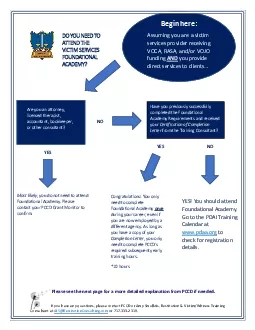Foundational Overview Cross Cultural Component
Author : jane-oiler | Published Date : 2025-06-27
Description: Foundational Overview Cross Cultural Component Importance of negotiation The Distributive Bargaining Situation Goals of one party are in fundamental direct conflict to another party WinLose Slicing the Pie Resources are fixed and
Presentation Embed Code
Download Presentation
Download
Presentation The PPT/PDF document
"Foundational Overview Cross Cultural Component" is the property of its rightful owner.
Permission is granted to download and print the materials on this website for personal, non-commercial use only,
and to display it on your personal computer provided you do not modify the materials and that you retain all
copyright notices contained in the materials. By downloading content from our website, you accept the terms of
this agreement.
Transcript:Foundational Overview Cross Cultural Component:
Foundational Overview Cross Cultural Component Importance of negotiation The Distributive Bargaining Situation Goals of one party are in fundamental , direct conflict to another party “Win-Lose” -- “Slicing the Pie” Resources are fixed and limited “The more one gets, the less the other gets” Maximizing one’s own share of resources is the goal Opinions on Distributive Bargaining Some people like it: -- they define “Negotiation” as distributive. Others: - Avoid it at all costs Confrontational Destructive Regardless, you need to know it because: Some situations require it Needed when we Claim Value in “Win-Win” negotiations Some like to use it against you. Summary of Use We use this strategy for: One-Time Deals: Car Purchase, Condo When: Relationship is not important Or: When we reach the Claiming Value stage of other negotiation strategies The Distributive Bargaining Situation Need advance preparation to set a: Target point, aspiration point What we would like to get Walk-away or resistance point What price we will not go beyond Asking price or initial offer People expect a give and take Need to consider this activity Danger: too high or too low The Distributive Bargaining Situation Party B - Buyer Party A - Seller Walkaway Point Target Point Asking Price Initial Offer Target Point Walkaway The Role of Alternatives to a Negotiated Agreement Alternatives = power to walk away from the negotiation If alternatives are attractive, negotiators can: Set their goals higher Make fewer concessions If there are no attractive alternatives: Negotiators have much less bargaining power The Distributive Bargaining Situation Party B - Buyer Party A - Seller Resistance Point Target Point Asking Price Initial Offer Target Point Resistance Alternative Alternative Fundamental Strategies Push for settlement near opponent’s resistance point Get the other party to change their resistance point Convince the other party that the settlement is the best possible Keys to the Strategies The keys to implementing any of the four strategies are: Discovering the other party’s resistance point Influencing the other party’s resistance point Information is valuable – target price, RP, motives, feelings, confidence… Tactical Tasks of Negotiators Assess outcome values and the costs of termination for the other party Manage the other party’s impressions What they think about your offer Modify the other party’s perceptions What they think about their situation Manipulate the actual costs of delay or termination Assess Outcome Values and the Costs of Termination for the Other Party Indirectly Determine














